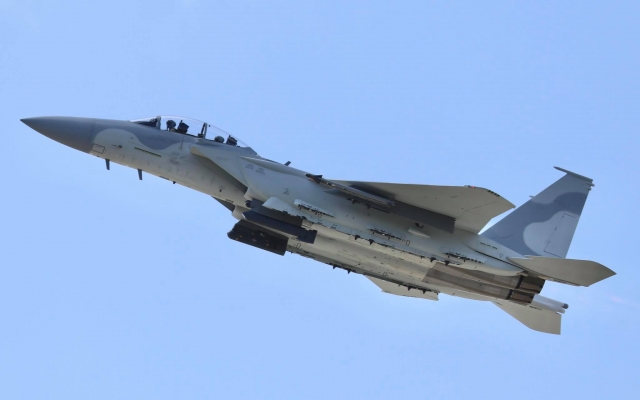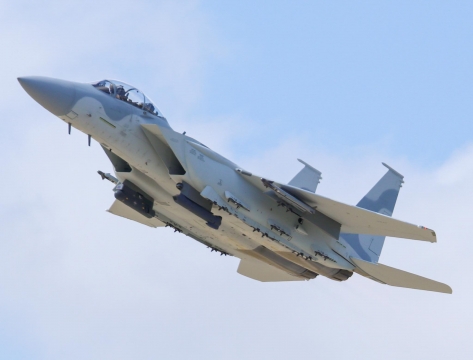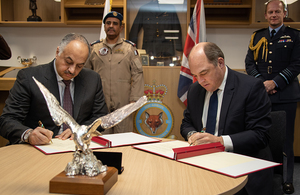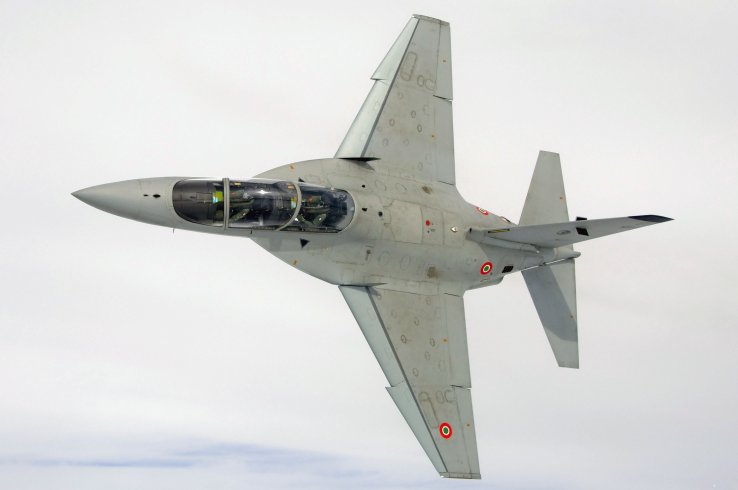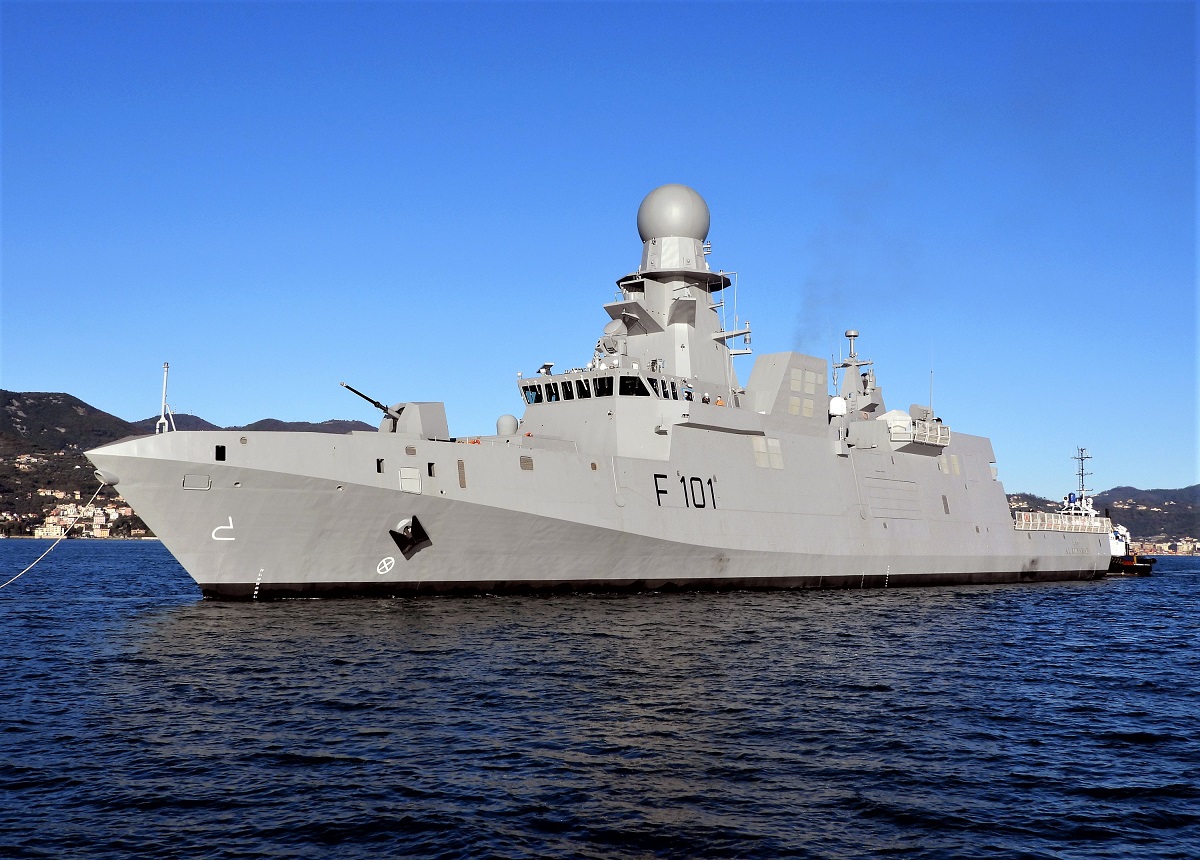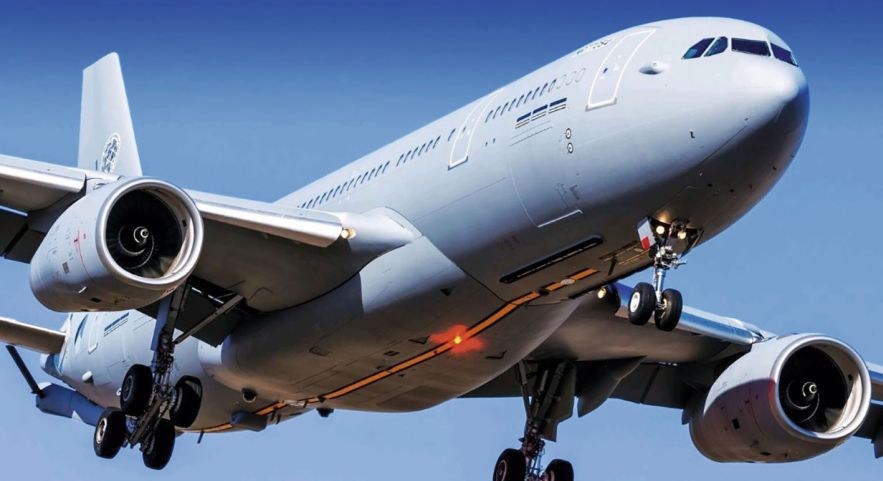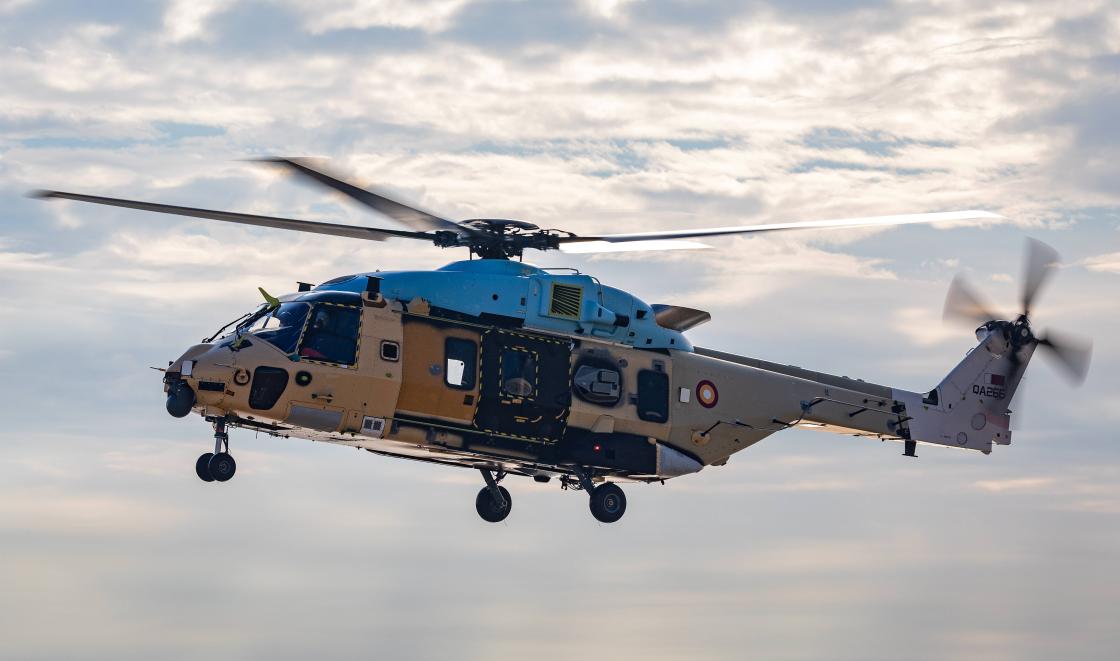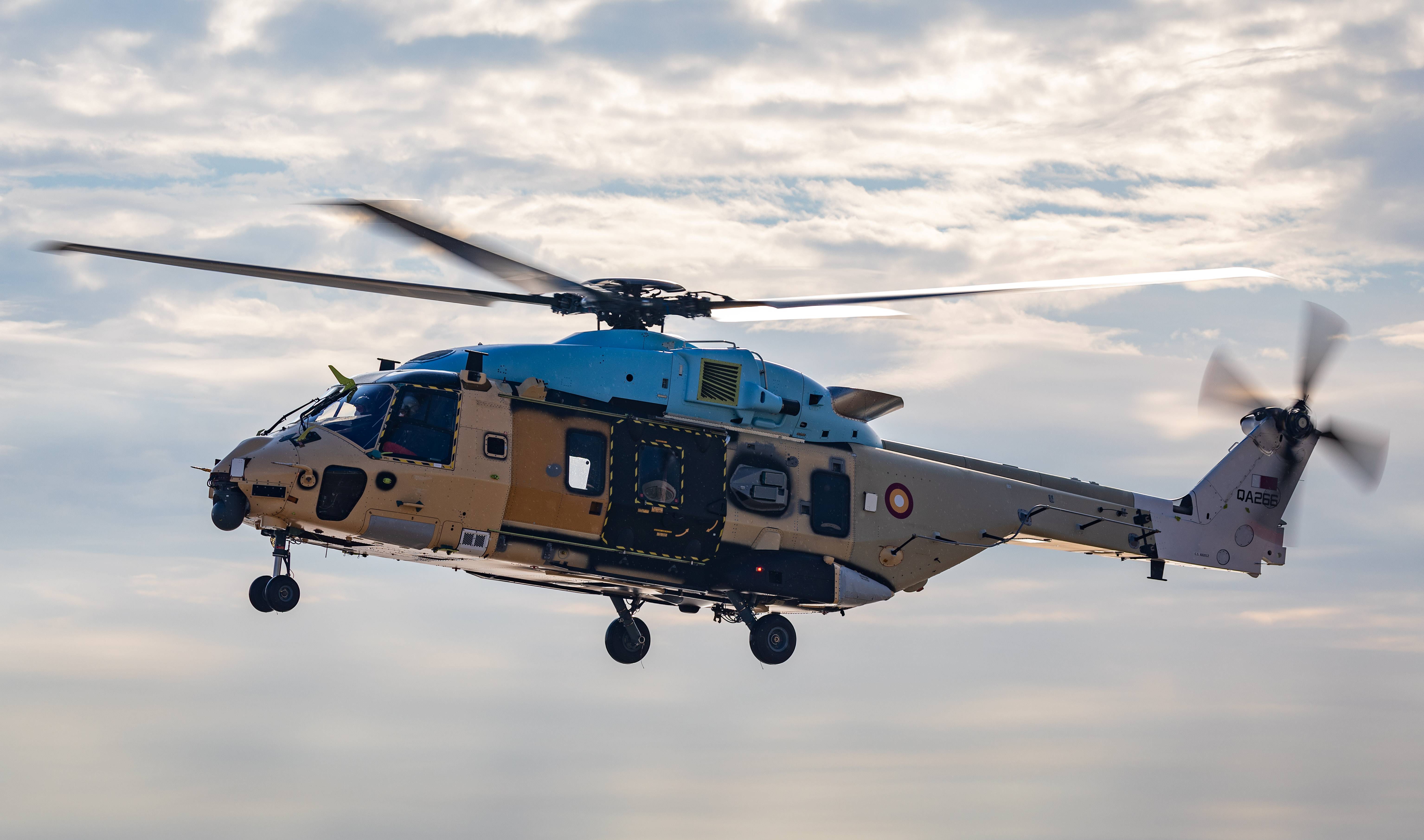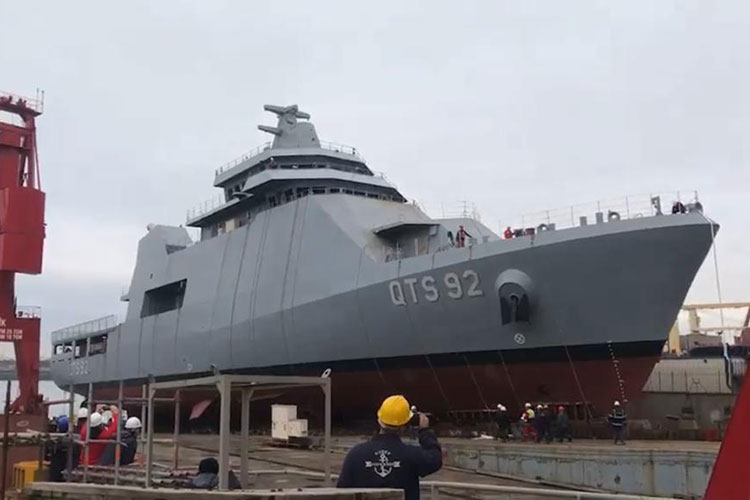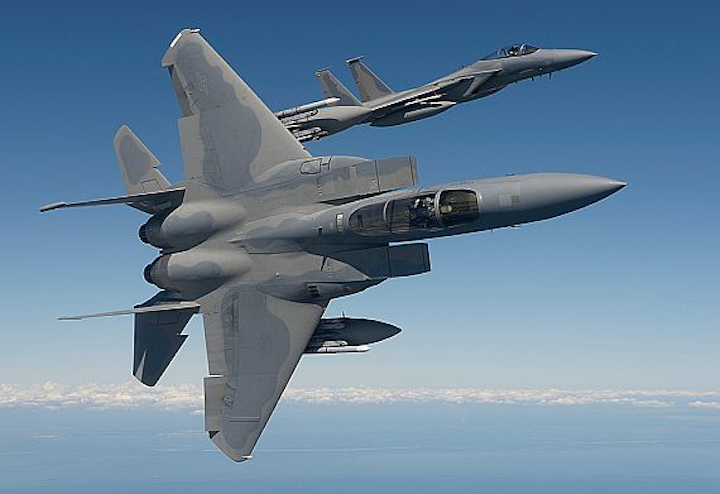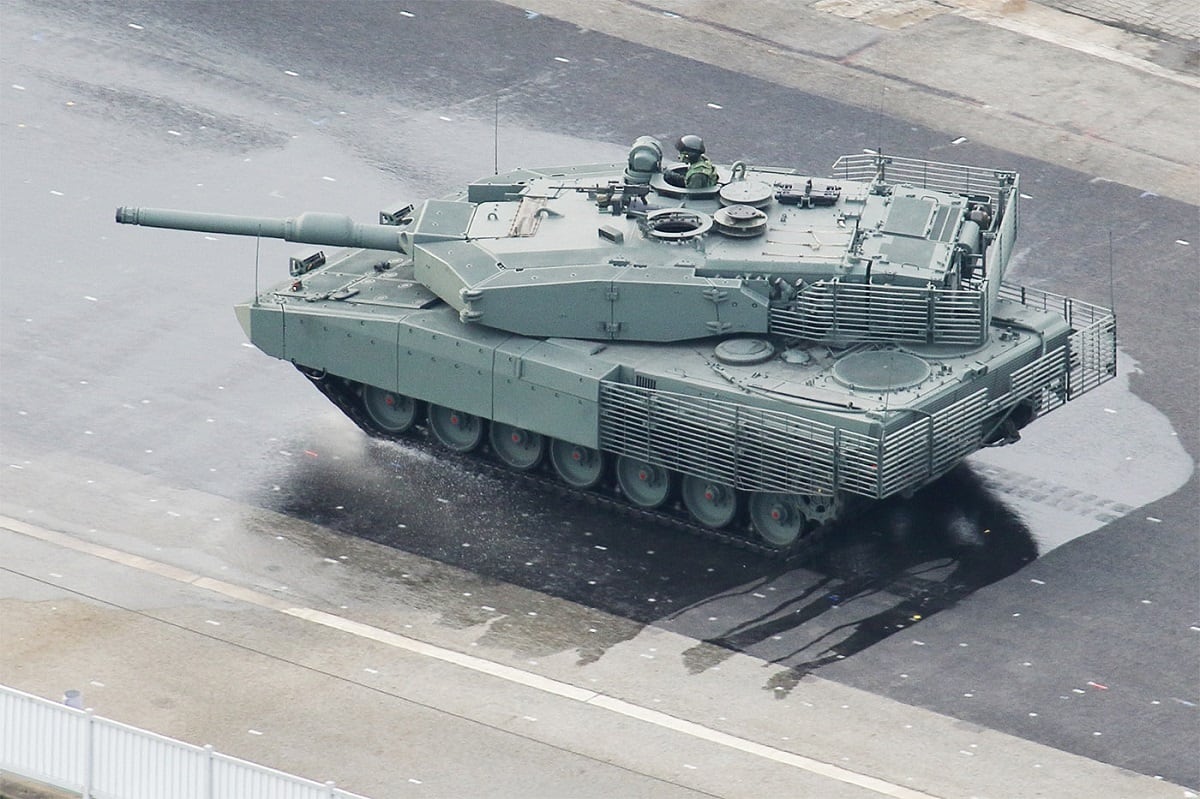İbrahim Sünnetci
The State of Qatar and Qatar Armed Forces

The State of Qatar is a peninsula located amid the western coast of the Arabian Gulf. The peninsula is approximately 100 km across and extends 200 km into the Gulf. Qatar adopted its first written constitution in April 1970 and became fully independent from the United Kingdom on September 1, 1971. The State of Qatar is a sovereign and independent Arab state that has been ruled by the Thani Family since Jassim Bin Mohammad Al-THANI signed a treaty with the UK in 1868 that recognized its separate status.
Having emerged as one of the world’s most important producers of oil and gas and is the richest country on earth, the State of Qatar has been governed by HH Sheikh Tamim Bin Hamad Bin Khalifa Al-THANI since June 2013. As one of the smallest nations by size and area in the world the State of Qatar has a total land area of 11,610 km2 (4,483 sq. miles). According to United Nations (UN) estimations, dated August 2019, the State of Qatar’s total population is 2,839 million. With some 340,000 people, Qataris are considered a ‘minority’ in their own nation amounting to only 12% of the population. Foreign workers amount to around 88% of the population, with Indians being the largest community numbering around 700,000.
Nowadays, the State of Qatar is one of the safest countries in the world with the seventh-lowest crime rate, according to the World Economic Forum.
Military Service
Since April 2015, when the National Service Law entered into force, Qatar has made it mandatory for Qatari citizens to be conscripted in the Army. Until April 2018, Qatari men between the ages of 18 and 35 years old must train in the military for at least three months if they are college graduates, and four months if they have high school diplomas or have dropped out of school.
In April 2018, amid the ongoing Gulf Crisis, Qatar allowed female Qatari citizens to join the Army and extended compulsory military service to one year. With this step the State of Qatar has sought to increase its limited manpower (citizen-soldiers) for the Armed Forces. According to Law No. 5 of 2018 on compulsory national service program issued by the Emir Sheikh Tamim Bin Hamad Al-THANI on April 4, 2018 Wednesday, those who refuse to participate in military service without an excuse can face imprisonment of one month to a year or a fine between US$13,700 to US$82,400.
Under the current legislation the Ministry of Interior and the Ministry of Public Health and other bodies concerned are required to provide the National Services Academy during the first half of each year the names of males who will be turning 18 years of age in the following year. The Qatari male must present himself to the National Services Academy within 60 days from the date of attaining the age of 18 or obtaining the high school certificate or the equivalent, whichever is earlier. The national service for females of the age of 18 is voluntary.
Foreign Contract Soldiers
Excluding Iraq and Saudi Arabia, the Arab states of the Persian Gulf (namely Bahrain, Kuwait, Iraq, Oman, Qatar, Saudi Arabia and the United Arab Emirates) have small citizen populations that limit their ability to strengthen their Armed Forces with the available pool of citizens.
Therefore, thanks to their rich financial wealth most of the Arab states that border the Persian Gulf (Arabian Gulf), prefer to recruit large numbers of contracted soldiers from other countries, including Jordan, Pakistan, Sudan and Indonesia to strengthen their Armies’ manpower. The foreign contract soldiers (mostly non-native Sunni Muslims and do not speak the local dialect or do not speak Arabic at all) generally have no political interests to pursue and seldom participate in attempts to overthrow the regime. They also have no social links to the native population, so in case of domestic social unrests the state can deploy them with confidence against its citizens. Relatively cheaper than citizen-soldiers, foreign contract soldiers can also be dismissed with no political liability.
According to open sources experiencing a struggle of limited manpower for its Armed Forces, Qatar is not only extending its compulsory national service program from 3 to 4 months to 12 months and allowing volunteer females to join the Army, but also recruits large numbers of foreign contract soldiers to overcome manpower limitations. As a wealthy oil and gas power, Qatar is one of the three Persian Gulf states that the highest proportion of foreign contract soldiers serve. Reports indicate that up to 85% of the Qatar Armed Forces’ manpower consist of foreign contract soldiers. In October 2017 ‘Somali Garowe Online’ revealed that in 2016 Qatar recruited 6,000 Somali soldiers to increase its defense force in addition to at least 360 Sudanese mercenaries to defend and protect Qatar’s Head of State. The growing imbalance between citizens and non-native personnel recruited from other countries in the Qatari Armed Forces has turned into an urgent concern since 2017.
In early June 2017 the Gulf Crisis broke out when a handful of Arab states led by Saudi Arabia (the de facto leader of the GCC) abruptly severed diplomatic relations with the State of Qatar and imposed a blockade on the State of Qatar. In response to threats from Saudi Arabia, Bahrain, the UAE and Egypt, Qatar launched a massive multi-billion dollar military power buildup. This massive re-equipment program however has raised a series of questions about the country’s ability to incorporate the ordered sophisticated weapon systems and platforms (including 24 x Eurofighter Typhoon, 36 x Rafale and 36 x F-15QA fighter jets as well as Doha Class air defense corvettes, OPV/FACM type ships, cadet training ships and an air defense LPD) into its military amid a crisis faced with the above mentioned Gulf nations. Considering the availability of citizen-soldiers/staff officers, Qatar is believed to be recruiting further foreign contract soldiers/staff officers to operate acquired sophisticated weaponry and to compensate for existing staffing shortage. Proving this expectation according to Aviation International News, the first batch of pilots trained for the Qatari Emiri Air Force in France in November 2017 were Pakistani exchange officers. In February 2018 the Express Tribune, a Pakistani publication, reported that 627 Pakistani personnel, including 165 from the Pakistan Army and 462 from the Pakistan Navy and Air Force, were deployed in Qatar. The report added nearly 300 additional personnel could be deployed to Qatar for “training and advisory” roles.
Foreign Troops
Most of the Arab states of the Persian Gulf consider the presence of foreign troops in their territories essential to fend off internal coups and foreign invasions. The method of joint military building, which is less expensive, more flexible and responsive to variables, is usually adopted when the state is unable to achieve a balance of power with its adversary on its own.
Due to the geopolitical power imbalance with its neighbors the State of Qatar has adopted the method of joint military building, since 1996. Through the construction of military bases for foreign troops in its territories the State of Qatar has aimed to bring in foreign troops to safeguard Qatari defense.
The presence of the Qatar Armed Forces and foreign troops operating together could aid in the formation of steadfast alliances to deter a potential foreign assault or an internal coup. While continuing implementation of the method of joint military building with an increased trend, after the Gulf Crisis the State of Qatar has realized that this method could not be adopted as a single option like before, but rather, as a parallel option to self-building. Qatar currently hosts some 13,000 US troops at Al Udeid Air Base and at As Sayliyah Army Base as well as some 2,000 Turkish soldiers (including Turkish Army, Navy and Special Forces personnel) at the Tariq Bin Ziyad and Khalid Bin Walid military barracks outside Doha. Turkey has been a major supporter of the State of Qatar since June 2017, when Saudi Arabia, Bahrain, the United Arab Emirates (UAE) and Egypt severed diplomatic and trade relations with the country.
Historically, Qatar has been a major defense partner to the United States, starting most notably after Operation Desert Storm in 1991, when the US-Qatar Defense Cooperation Agreement (DCA) was signed. Located at 35km southwest of Doha, the Al Udeid Air Base is home to over 11,000 US troops and is considered the largest US military base in the Middle East. Constructed in 1996 at the cost of more than US$1 Billion the base also houses Qatari Emiri Air Force and US-led anti-ISIL coalition forces and over 100 operational aircraft. The Al Udeid Air Base serves as the headquarters for the US Central Command (officially called the Combined Air and Space Operations Center), US Air Force Central Command and the Forward Command Center for US Special Operations. The base has key strategic importance in the US air campaign against the Islamic State (ISIL) in Syria and Iraq with 80% of aerial refueling in the region took place there. In January 2019, a memorandum of understanding (MoU) was signed between the US Department of Defense (DoD) and the State of Qatar to coordinate efforts on the expansion of Al Udeid Air Base, which would help to increase operational capabilities of US forces. In July 2019 after his meeting with US President Donald TRUMP, Head of the State of Qatar Tamim Bin Hamad Al-THANI said Qatar would pay for the expansion of the air base. The expansion project valued at US$1.8 Billion also covers the construction of additional and improved quarters along with new schools, a sophisticated medical center, more recreational facilities and family compounds, 200 villas in total, aiming to improve the living conditions of US Air Force personnel stationed there. In early June 2017, the Pentagon said that the diplomatic tensions between Qatar and some of its Arab neighbors would not affect US operations at the Air Base. In April 2018, the then Saudi Foreign Minister Adel Al-UBEIR said if the US withdraws the military base and the protection that its presence provides to Qatar, the regime in Doha “would fall there in less than a week.”
Located in Al Sailiya, a suburb outside Doha, Qatar the As Sayliyah Army Base was established in 2000. As the largest US Army prepositioning site in the world the base stores prepositioned equipment for CENTCOM, most of which is on reserves for use in Iraq and Afghanistan.
Turkey and Qatar’s defense ties have strengthened in recent years, in line with the countries’ political alliance. In order to resist the Saudi Arabia (the de facto leader of the GCC) led pressures within the Gulf Cooperation Council (GCC/an alliance of six Gulf monarchies; Saudi Arabia, Kuwait, Qatar, United Arab Emirates, Bahrain, and Oman that came into existence with an aim to create regional security system), the State of Qatar chose Turkey as an ally and allowed the country to open a military base in its territories. Turkey’s military involvement in Doha dates back to December 19, 2014, when the two countries inked a military cooperation agreement that allows the deployment of the Turkish Armed Forces (TAF) in the State of Qatar. The agreement was ratified by the Turkish Parliament (TBMM) on March 19, 2015. The first group of Turkish troops arrived in the capital city of Doha on October 4, 2015, and four days later the Turkish flag was hoisted at Turkey’s new permanent military base that was set up at the Tariq Bin Ziyad military barracks under an agreement signed in December 2014. The establishment of Turkey’s permanent military base (which was named the Qatar-Turkey Combined Joint Force Command in December 2017) in Doha at the Tariq Bin Ziyad military barracks was completed in April 2016. According to reports the base has a capacity to accommodate up to 5,000 troops and Turkey plans to gradually increase the number of its forces in Qatar to 3,000 in accordance with the agreement between the two countries and keep a brigade in the Gulf country. With the establishment of a permanent military base in Doha, which represents Turkey's first overseas military installation in the Middle East, Turkey has become a counterbalancing power in the region concerning Iran and Saudi Arabia.
The Qatar-Turkey Combined Joint Force Command, of which headquarters is overlooking the Strait of Hormuz in the Persian Gulf, has been active since October 2015 at the Tariq Bin Ziyad military barracks, and until August 2019 was comprised of commando platoons, military engineering unit indirect fire support teams, and air force and naval liaison teams in what is basically a mechanized battalion battle group involving some 300 Turkish soldiers (as of July 2017 there were just 230 troops and 38 vehicles at the base).
Cooperation between Turkish and Qatar Armed Forces has notably intensified since the Gulf Crisis broke out in June 2017. One of the 13 demands that were presented by Saudi-led Arab states to Qatar on June 22, 2017 was the calling for the immediate closure of Turkey’s permanent military base in Qatar and the termination of military cooperation with Turkey inside Qatar. However, pointing out that it was open to negotiations without endangering its sovereignty, the State of Qatar has refused to meet these demands and agreed with Turkey to increase the size of the Turkish military contingent in the country and to expand the Qatar-Turkey Combined Joint Force Command in Doha with naval and aerial components. As part of this agreement, Turkey immediately sent additional troops and armored vehicles (including Self Propelled Howitzers) to its permanent base at the Tariq Bin Ziyad military barracks and conducted joint exercises with Qatar in August 2017.
Shortly after the eruption of the Gulf Crisis on June 7, 2017 the Turkish Parliament (TBMM) ratified two deals on deploying troops in Qatar and training its gendarmerie forces. As part of the expansion plan construction of a new base near the Tariq Bin Ziyad military barracks was launched and completed in August 2019. The Qatar-Turkey Combined Joined Force Command’s new Headquarters was officially opened with a ceremony held on December 14, 2019 with the participation of Turkish MoND Hulusi AKAR, Chief of Turkish General Staff General Yaşar GÜLER and Qatar Deputy Prime Minister and Minister of State for Defense Affairs Dr. Khalid Bin Mohamed Al-ATTIYAH. The new base was named after Khalid Bin Walid - a well-known commander in early years of Islam. According to Turkey’s President Recep Tayyip ERDOĞAN the Qatar-Turkey Combined Joined Force Command would serve the stability and peace of not only Qatar but also the Gulf region and described the new military base as “the symbol of brotherhood, friendship, solidarity and sincerity.”
Qatar Armed Forces
The Ministry of Defense of Qatar is responsible for defending the homeland. It leads fighting and support units including the Qatari Emiri Land Force, the Qatari Emiri Air Force and the Qatar Emiri Navy.
Founded in 1971 after the country gained independence from the United Kingdom, the Qatar Armed Forces became the military forces of the State of Qatar. According to reports as of early 2016, an estimated 12,000 personnel - 8,500 Land Forces, 1,800 Naval Forces, and 1,500 Air Forces served in the Qatar Armed Forces, the second smallest in the region after Bahrain. However, soon after the diplomatic crisis (Gulf Crisis) broke out, Qatar sought out to improve its military capabilities and to expand its Armed Forces. In this context, while on the one hand the State has been purchasing advanced military equipment from various manufacturers and signing various agreements for training and enhancing its human resources, on the other hand Qatar has extended its compulsory national service program with an aim to increase its limited manpower (citizen-soldiers) for the Armed Forces to support its self-reliance strategy.
As a result of ongoing expansion efforts, according to open sources, as of 2019 the Qatar Armed Forces’ personnel strength has been estimated to have increased to over 20,000 personnel - some 15,000 Land Forces, 3,000 Naval Forces (with Naval Police), and over 2,500 Air Forces. In order to support its self-reliance strategy, the personnel strength of the Qatar Armed Forces is expected to be increased further in the coming years. In this context, for example the Qatari Emiri Navy that launched the construction of the new major naval base in early 2019 is reportedly planning to raise the number of its personnel from 3,000 to more than 7,000 by 2025. Being constructed at Hamad Port, a commercial port inaugurated in 2017 and located at south of Doha in Al Wakra, the new Qatar Emiri Naval Base will include a quay wall and basin revetments, infrastructure, utility buildings, security facilities, a helicopter airfield, and an access bridge. The boundary is secured with bulletproof-glass buildings, detention facilities, and security gates; the base will have special defense and surveillance towers too. The base is expected to house about 6,000 troops with 200 buildings and to host some of Qatar’s newest expensive military purchases.
As a small state, Qatar’s defense policy is mostly focused on self-defense and in order to achieve this strategy the State has been allocating a considerable amount of money to improve its military capabilities and to equip its Armed Forces with state-of-the art weapon and platform systems. According to some sources the State has allocated at least US$6.5 Billion in defense expenditures for 2019. According to Stockholm International Peace Research Institute (SIPRI) figures Qatari arms imports rose by 245% between 2007 and 2011, by 225% between 2009-2013 and 2014-2018 and ranked as the ninth biggest arms importer country in the world in 2018. According to SIPRI data Qatar’s arms imports increased by more than 22% in 2018 compared to 2017 due to rearmament efforts and the diplomatic crisis (Gulf Crisis) with neighboring countries.
In the 1980s and 1990s France provided some 80% of the country’s military requirements as Qatar’s main arms supplier. Since 2009 Qatar has been relying heavily on US defense companies to purchase defense equipment. According to SIPRI data the US was responsible for 65% of Qatari arms imports during 2014-2018, while the remaining imports came from countries such as Germany, France, Italy, China, Russia and Turkey.
During last decade the State of Qatar has used its vast oil wealth to rebuild its Armed Forces and has spent tens of billions of US dollars buying some of the world’s most advanced military weapons. Since the start of the Gulf Crisis, the State of Qatar has purchased three different types of fighters, including 36 x US-made F-15QAs, 12 x French-made Rafale fighters (under the agreement signed in May 2015 Qatar has ordered 24 Rafales and with a US$1.3 Billion valued follow-on order agreement awarded in December 2017 country exercised option for the purchase of 12 additional Rafales thus the total number of Rafales has been increased to 36) and 24 Eurofighter Typhoons as well as 4 Doha Class air defense corvettes, 2 OPV/FACM type ships, 1 air defense LPD and 2 cadet training ships).
Force Structure of the Qatar Armed Forces
The Qatar Armed Forces are organized into three branches: the Qatari Emiri Land Force, the Qatari Emiri Navy, and the Qatari Emiri Air Force. The following information on the equipment of three branches of the Qatar Armed Forces have been compiled from various open sources.
Military Age: Between the ages of 18-35 years (Regular), with a reserve commitment of 10 years (up to age 40)
Conscription: 12 Months
Total Active Personnel: Over 20,000
Para-Military Forces: Royal Guard Brigade (the Amiri Guard under the Ministry of Defence and part of the Qatari Emiri Land Force) and Police Department. There are also 3 Special Force-type Units each with company strength under Army command: Oil Well Guard Units (located in the Dukhan and Umm Bab areas and charged with securing pipelines), Border Guards Regiment and a Static Guard Regiment.
Source: https://www.defenceturkey.com/en/content/the-state-of-qatar-and-qatar-armed-forces-3908
The State of Qatar and Qatar Armed Forces
The State of Qatar is a peninsula located amid the western coast of the Arabian Gulf. The peninsula is approximately 100 km across and extends 200 km into the Gulf. Qatar adopted its first written constitution in April 1970 and became fully independent from the United Kingdom on September 1, 1971. The State of Qatar is a sovereign and independent Arab state that has been ruled by the Thani Family since Jassim Bin Mohammad Al-THANI signed a treaty with the UK in 1868 that recognized its separate status.
Having emerged as one of the world’s most important producers of oil and gas and is the richest country on earth, the State of Qatar has been governed by HH Sheikh Tamim Bin Hamad Bin Khalifa Al-THANI since June 2013. As one of the smallest nations by size and area in the world the State of Qatar has a total land area of 11,610 km2 (4,483 sq. miles). According to United Nations (UN) estimations, dated August 2019, the State of Qatar’s total population is 2,839 million. With some 340,000 people, Qataris are considered a ‘minority’ in their own nation amounting to only 12% of the population. Foreign workers amount to around 88% of the population, with Indians being the largest community numbering around 700,000.
Nowadays, the State of Qatar is one of the safest countries in the world with the seventh-lowest crime rate, according to the World Economic Forum.
Military Service
Since April 2015, when the National Service Law entered into force, Qatar has made it mandatory for Qatari citizens to be conscripted in the Army. Until April 2018, Qatari men between the ages of 18 and 35 years old must train in the military for at least three months if they are college graduates, and four months if they have high school diplomas or have dropped out of school.
In April 2018, amid the ongoing Gulf Crisis, Qatar allowed female Qatari citizens to join the Army and extended compulsory military service to one year. With this step the State of Qatar has sought to increase its limited manpower (citizen-soldiers) for the Armed Forces. According to Law No. 5 of 2018 on compulsory national service program issued by the Emir Sheikh Tamim Bin Hamad Al-THANI on April 4, 2018 Wednesday, those who refuse to participate in military service without an excuse can face imprisonment of one month to a year or a fine between US$13,700 to US$82,400.
Under the current legislation the Ministry of Interior and the Ministry of Public Health and other bodies concerned are required to provide the National Services Academy during the first half of each year the names of males who will be turning 18 years of age in the following year. The Qatari male must present himself to the National Services Academy within 60 days from the date of attaining the age of 18 or obtaining the high school certificate or the equivalent, whichever is earlier. The national service for females of the age of 18 is voluntary.
Foreign Contract Soldiers
Excluding Iraq and Saudi Arabia, the Arab states of the Persian Gulf (namely Bahrain, Kuwait, Iraq, Oman, Qatar, Saudi Arabia and the United Arab Emirates) have small citizen populations that limit their ability to strengthen their Armed Forces with the available pool of citizens.
Therefore, thanks to their rich financial wealth most of the Arab states that border the Persian Gulf (Arabian Gulf), prefer to recruit large numbers of contracted soldiers from other countries, including Jordan, Pakistan, Sudan and Indonesia to strengthen their Armies’ manpower. The foreign contract soldiers (mostly non-native Sunni Muslims and do not speak the local dialect or do not speak Arabic at all) generally have no political interests to pursue and seldom participate in attempts to overthrow the regime. They also have no social links to the native population, so in case of domestic social unrests the state can deploy them with confidence against its citizens. Relatively cheaper than citizen-soldiers, foreign contract soldiers can also be dismissed with no political liability.
According to open sources experiencing a struggle of limited manpower for its Armed Forces, Qatar is not only extending its compulsory national service program from 3 to 4 months to 12 months and allowing volunteer females to join the Army, but also recruits large numbers of foreign contract soldiers to overcome manpower limitations. As a wealthy oil and gas power, Qatar is one of the three Persian Gulf states that the highest proportion of foreign contract soldiers serve. Reports indicate that up to 85% of the Qatar Armed Forces’ manpower consist of foreign contract soldiers. In October 2017 ‘Somali Garowe Online’ revealed that in 2016 Qatar recruited 6,000 Somali soldiers to increase its defense force in addition to at least 360 Sudanese mercenaries to defend and protect Qatar’s Head of State. The growing imbalance between citizens and non-native personnel recruited from other countries in the Qatari Armed Forces has turned into an urgent concern since 2017.
In early June 2017 the Gulf Crisis broke out when a handful of Arab states led by Saudi Arabia (the de facto leader of the GCC) abruptly severed diplomatic relations with the State of Qatar and imposed a blockade on the State of Qatar. In response to threats from Saudi Arabia, Bahrain, the UAE and Egypt, Qatar launched a massive multi-billion dollar military power buildup. This massive re-equipment program however has raised a series of questions about the country’s ability to incorporate the ordered sophisticated weapon systems and platforms (including 24 x Eurofighter Typhoon, 36 x Rafale and 36 x F-15QA fighter jets as well as Doha Class air defense corvettes, OPV/FACM type ships, cadet training ships and an air defense LPD) into its military amid a crisis faced with the above mentioned Gulf nations. Considering the availability of citizen-soldiers/staff officers, Qatar is believed to be recruiting further foreign contract soldiers/staff officers to operate acquired sophisticated weaponry and to compensate for existing staffing shortage. Proving this expectation according to Aviation International News, the first batch of pilots trained for the Qatari Emiri Air Force in France in November 2017 were Pakistani exchange officers. In February 2018 the Express Tribune, a Pakistani publication, reported that 627 Pakistani personnel, including 165 from the Pakistan Army and 462 from the Pakistan Navy and Air Force, were deployed in Qatar. The report added nearly 300 additional personnel could be deployed to Qatar for “training and advisory” roles.
Foreign Troops
Most of the Arab states of the Persian Gulf consider the presence of foreign troops in their territories essential to fend off internal coups and foreign invasions. The method of joint military building, which is less expensive, more flexible and responsive to variables, is usually adopted when the state is unable to achieve a balance of power with its adversary on its own.
Due to the geopolitical power imbalance with its neighbors the State of Qatar has adopted the method of joint military building, since 1996. Through the construction of military bases for foreign troops in its territories the State of Qatar has aimed to bring in foreign troops to safeguard Qatari defense.
The presence of the Qatar Armed Forces and foreign troops operating together could aid in the formation of steadfast alliances to deter a potential foreign assault or an internal coup. While continuing implementation of the method of joint military building with an increased trend, after the Gulf Crisis the State of Qatar has realized that this method could not be adopted as a single option like before, but rather, as a parallel option to self-building. Qatar currently hosts some 13,000 US troops at Al Udeid Air Base and at As Sayliyah Army Base as well as some 2,000 Turkish soldiers (including Turkish Army, Navy and Special Forces personnel) at the Tariq Bin Ziyad and Khalid Bin Walid military barracks outside Doha. Turkey has been a major supporter of the State of Qatar since June 2017, when Saudi Arabia, Bahrain, the United Arab Emirates (UAE) and Egypt severed diplomatic and trade relations with the country.
Historically, Qatar has been a major defense partner to the United States, starting most notably after Operation Desert Storm in 1991, when the US-Qatar Defense Cooperation Agreement (DCA) was signed. Located at 35km southwest of Doha, the Al Udeid Air Base is home to over 11,000 US troops and is considered the largest US military base in the Middle East. Constructed in 1996 at the cost of more than US$1 Billion the base also houses Qatari Emiri Air Force and US-led anti-ISIL coalition forces and over 100 operational aircraft. The Al Udeid Air Base serves as the headquarters for the US Central Command (officially called the Combined Air and Space Operations Center), US Air Force Central Command and the Forward Command Center for US Special Operations. The base has key strategic importance in the US air campaign against the Islamic State (ISIL) in Syria and Iraq with 80% of aerial refueling in the region took place there. In January 2019, a memorandum of understanding (MoU) was signed between the US Department of Defense (DoD) and the State of Qatar to coordinate efforts on the expansion of Al Udeid Air Base, which would help to increase operational capabilities of US forces. In July 2019 after his meeting with US President Donald TRUMP, Head of the State of Qatar Tamim Bin Hamad Al-THANI said Qatar would pay for the expansion of the air base. The expansion project valued at US$1.8 Billion also covers the construction of additional and improved quarters along with new schools, a sophisticated medical center, more recreational facilities and family compounds, 200 villas in total, aiming to improve the living conditions of US Air Force personnel stationed there. In early June 2017, the Pentagon said that the diplomatic tensions between Qatar and some of its Arab neighbors would not affect US operations at the Air Base. In April 2018, the then Saudi Foreign Minister Adel Al-UBEIR said if the US withdraws the military base and the protection that its presence provides to Qatar, the regime in Doha “would fall there in less than a week.”
Located in Al Sailiya, a suburb outside Doha, Qatar the As Sayliyah Army Base was established in 2000. As the largest US Army prepositioning site in the world the base stores prepositioned equipment for CENTCOM, most of which is on reserves for use in Iraq and Afghanistan.
Turkey and Qatar’s defense ties have strengthened in recent years, in line with the countries’ political alliance. In order to resist the Saudi Arabia (the de facto leader of the GCC) led pressures within the Gulf Cooperation Council (GCC/an alliance of six Gulf monarchies; Saudi Arabia, Kuwait, Qatar, United Arab Emirates, Bahrain, and Oman that came into existence with an aim to create regional security system), the State of Qatar chose Turkey as an ally and allowed the country to open a military base in its territories. Turkey’s military involvement in Doha dates back to December 19, 2014, when the two countries inked a military cooperation agreement that allows the deployment of the Turkish Armed Forces (TAF) in the State of Qatar. The agreement was ratified by the Turkish Parliament (TBMM) on March 19, 2015. The first group of Turkish troops arrived in the capital city of Doha on October 4, 2015, and four days later the Turkish flag was hoisted at Turkey’s new permanent military base that was set up at the Tariq Bin Ziyad military barracks under an agreement signed in December 2014. The establishment of Turkey’s permanent military base (which was named the Qatar-Turkey Combined Joint Force Command in December 2017) in Doha at the Tariq Bin Ziyad military barracks was completed in April 2016. According to reports the base has a capacity to accommodate up to 5,000 troops and Turkey plans to gradually increase the number of its forces in Qatar to 3,000 in accordance with the agreement between the two countries and keep a brigade in the Gulf country. With the establishment of a permanent military base in Doha, which represents Turkey's first overseas military installation in the Middle East, Turkey has become a counterbalancing power in the region concerning Iran and Saudi Arabia.
The Qatar-Turkey Combined Joint Force Command, of which headquarters is overlooking the Strait of Hormuz in the Persian Gulf, has been active since October 2015 at the Tariq Bin Ziyad military barracks, and until August 2019 was comprised of commando platoons, military engineering unit indirect fire support teams, and air force and naval liaison teams in what is basically a mechanized battalion battle group involving some 300 Turkish soldiers (as of July 2017 there were just 230 troops and 38 vehicles at the base).
Cooperation between Turkish and Qatar Armed Forces has notably intensified since the Gulf Crisis broke out in June 2017. One of the 13 demands that were presented by Saudi-led Arab states to Qatar on June 22, 2017 was the calling for the immediate closure of Turkey’s permanent military base in Qatar and the termination of military cooperation with Turkey inside Qatar. However, pointing out that it was open to negotiations without endangering its sovereignty, the State of Qatar has refused to meet these demands and agreed with Turkey to increase the size of the Turkish military contingent in the country and to expand the Qatar-Turkey Combined Joint Force Command in Doha with naval and aerial components. As part of this agreement, Turkey immediately sent additional troops and armored vehicles (including Self Propelled Howitzers) to its permanent base at the Tariq Bin Ziyad military barracks and conducted joint exercises with Qatar in August 2017.
Shortly after the eruption of the Gulf Crisis on June 7, 2017 the Turkish Parliament (TBMM) ratified two deals on deploying troops in Qatar and training its gendarmerie forces. As part of the expansion plan construction of a new base near the Tariq Bin Ziyad military barracks was launched and completed in August 2019. The Qatar-Turkey Combined Joined Force Command’s new Headquarters was officially opened with a ceremony held on December 14, 2019 with the participation of Turkish MoND Hulusi AKAR, Chief of Turkish General Staff General Yaşar GÜLER and Qatar Deputy Prime Minister and Minister of State for Defense Affairs Dr. Khalid Bin Mohamed Al-ATTIYAH. The new base was named after Khalid Bin Walid - a well-known commander in early years of Islam. According to Turkey’s President Recep Tayyip ERDOĞAN the Qatar-Turkey Combined Joined Force Command would serve the stability and peace of not only Qatar but also the Gulf region and described the new military base as “the symbol of brotherhood, friendship, solidarity and sincerity.”
Qatar Armed Forces
The Ministry of Defense of Qatar is responsible for defending the homeland. It leads fighting and support units including the Qatari Emiri Land Force, the Qatari Emiri Air Force and the Qatar Emiri Navy.
Founded in 1971 after the country gained independence from the United Kingdom, the Qatar Armed Forces became the military forces of the State of Qatar. According to reports as of early 2016, an estimated 12,000 personnel - 8,500 Land Forces, 1,800 Naval Forces, and 1,500 Air Forces served in the Qatar Armed Forces, the second smallest in the region after Bahrain. However, soon after the diplomatic crisis (Gulf Crisis) broke out, Qatar sought out to improve its military capabilities and to expand its Armed Forces. In this context, while on the one hand the State has been purchasing advanced military equipment from various manufacturers and signing various agreements for training and enhancing its human resources, on the other hand Qatar has extended its compulsory national service program with an aim to increase its limited manpower (citizen-soldiers) for the Armed Forces to support its self-reliance strategy.
As a result of ongoing expansion efforts, according to open sources, as of 2019 the Qatar Armed Forces’ personnel strength has been estimated to have increased to over 20,000 personnel - some 15,000 Land Forces, 3,000 Naval Forces (with Naval Police), and over 2,500 Air Forces. In order to support its self-reliance strategy, the personnel strength of the Qatar Armed Forces is expected to be increased further in the coming years. In this context, for example the Qatari Emiri Navy that launched the construction of the new major naval base in early 2019 is reportedly planning to raise the number of its personnel from 3,000 to more than 7,000 by 2025. Being constructed at Hamad Port, a commercial port inaugurated in 2017 and located at south of Doha in Al Wakra, the new Qatar Emiri Naval Base will include a quay wall and basin revetments, infrastructure, utility buildings, security facilities, a helicopter airfield, and an access bridge. The boundary is secured with bulletproof-glass buildings, detention facilities, and security gates; the base will have special defense and surveillance towers too. The base is expected to house about 6,000 troops with 200 buildings and to host some of Qatar’s newest expensive military purchases.
As a small state, Qatar’s defense policy is mostly focused on self-defense and in order to achieve this strategy the State has been allocating a considerable amount of money to improve its military capabilities and to equip its Armed Forces with state-of-the art weapon and platform systems. According to some sources the State has allocated at least US$6.5 Billion in defense expenditures for 2019. According to Stockholm International Peace Research Institute (SIPRI) figures Qatari arms imports rose by 245% between 2007 and 2011, by 225% between 2009-2013 and 2014-2018 and ranked as the ninth biggest arms importer country in the world in 2018. According to SIPRI data Qatar’s arms imports increased by more than 22% in 2018 compared to 2017 due to rearmament efforts and the diplomatic crisis (Gulf Crisis) with neighboring countries.
In the 1980s and 1990s France provided some 80% of the country’s military requirements as Qatar’s main arms supplier. Since 2009 Qatar has been relying heavily on US defense companies to purchase defense equipment. According to SIPRI data the US was responsible for 65% of Qatari arms imports during 2014-2018, while the remaining imports came from countries such as Germany, France, Italy, China, Russia and Turkey.
During last decade the State of Qatar has used its vast oil wealth to rebuild its Armed Forces and has spent tens of billions of US dollars buying some of the world’s most advanced military weapons. Since the start of the Gulf Crisis, the State of Qatar has purchased three different types of fighters, including 36 x US-made F-15QAs, 12 x French-made Rafale fighters (under the agreement signed in May 2015 Qatar has ordered 24 Rafales and with a US$1.3 Billion valued follow-on order agreement awarded in December 2017 country exercised option for the purchase of 12 additional Rafales thus the total number of Rafales has been increased to 36) and 24 Eurofighter Typhoons as well as 4 Doha Class air defense corvettes, 2 OPV/FACM type ships, 1 air defense LPD and 2 cadet training ships).
Force Structure of the Qatar Armed Forces
The Qatar Armed Forces are organized into three branches: the Qatari Emiri Land Force, the Qatari Emiri Navy, and the Qatari Emiri Air Force. The following information on the equipment of three branches of the Qatar Armed Forces have been compiled from various open sources.
Military Age: Between the ages of 18-35 years (Regular), with a reserve commitment of 10 years (up to age 40)
Conscription: 12 Months
Total Active Personnel: Over 20,000
Para-Military Forces: Royal Guard Brigade (the Amiri Guard under the Ministry of Defence and part of the Qatari Emiri Land Force) and Police Department. There are also 3 Special Force-type Units each with company strength under Army command: Oil Well Guard Units (located in the Dukhan and Umm Bab areas and charged with securing pipelines), Border Guards Regiment and a Static Guard Regiment.
Source: https://www.defenceturkey.com/en/content/the-state-of-qatar-and-qatar-armed-forces-3908



